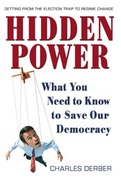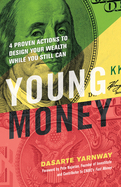Shows how managers can develop the talents of their employees naturally, efficiently and effectively.
-
Shows how managers can readily embed talent development into their day, going well beyond the usual coaching and training programs--an incredible complement to talent management systems
-
Offers five exceptional development practices derived from research with managers and professionals at twenty-eight companies
-
Filled with real examples and easily accessible advice
Most organizations report that talent is the key to their success. Yet they struggle mightily to develop their workforce. McKinsey's ten-year follow-up to its famous "War for Talent" concluded that heavy instruments in talent managements processes have been "insufficient, superficial, and wasteful." Managers consistently say they don't feel they have the time or skills to do the job. Even if they want to develop their people--they are overloaded just meeting their numbers.
Some managers, however, are able to deliver business results and develop their people in significant ways. Wendy Axelrod and Jeannie Coyle studied these "Exceptional Development Managers" in companies like Adidas, Microsoft, Siemens, Merck, Corning, and Kraft. The authors uncovered five practices these managers shared. Without fail they integrated development into day-to-day work, rather than making it a separate event. They leveraged the importance of emotions and trust in making work more developmental. They helped their staff find the right development partners. They taught their people how to increase their impact by navigating organizational politics. And they infused their departments' environment with abundant development opportunities. In all, these managers' efforts were deliberate, resourceful, and continuous.
Axelrod and Coyle offer a wealth of real-life examples and specific techniques to help readers apply these practices for themselves. Working in this way not only pays huge dividends for managers' employees and organizations--it makes the manager's job far richer and more rewarding.
2005
- Presents an original analysis of what the real sources of power are in America today
- Reveals the tactics used by corporate interests to wield hidden power
- Offers detailed strategic advice for how the Democrats can unite with grassroots social movements and form a powerful coalition for fundamental change
- Thom Hartmann, Air America radio host and bestselling author of Screwed, says "Hidden Power is the must-read book of the year. Buy three copies, at least, because you'll want to share a few with friends, and will never want to part with your own well-marked-up copy." read the full review
2018
If you're under 40, you may not have a lot of money, but you're loaded with a valuable resource: time. It probably doesn't seem like it when you're looking at your student loan debt or scraping up rent money each month, but being young is the ultimate advantage when it comes to building wealth. Starting now means you can experiment, learn from mistakes, bounce back from setbacks, and steadily build your legacy.
Rising-star financial advisor Dasarte Yarnway offers a simple 4-step process you can use to become a Master Wealth Builder. It begins with having the right mindset—wealth begins in your mind and then is built every day through intentional actions. Yarnway examines:
• The 4 most common financial pitfalls and how to avoid them
• The 5 habits all Master Wealth Builders engage in
• The 3 best ways to master your income
• 7 simple practices for controlling costs
A worksheet helps you assess exactly where you are financially, where you want to go, and how you're going to get there. So start now! As Warren Buffett said, “Someone is sitting in the shade today because someone planted a tree long ago.” The sooner you plant, the more shade you'll have.
Joy Wiggins and Kami Anderson advocate that the only way women can successfully support each other is by addressing the varying intersections of our individual power and privileges, particularly focusing on how some privileges are inherited along lines of race, class, sexuality, and geography. When we fully examine how we have power in certain situations and not in others, we start to see where we can lend privilege to create truly inclusive spaces for the historically underrepresented and marginalized.
Wiggins and Anderson look at how the dynamics of privilege and power have played out in the history of the feminist movement and identify and break down socialized behaviors and ideologies that trigger implicit bias and microaggressions. And they provide tools to interrupt negative thoughts and actions so women can nurture mutual support and show up as their authentic selves. Each chapter features a dialogue between them reflecting on how issues of race, privilege, and power have played out in their lives and their friendship.
The system of patriarchy has created an environment for women to knowingly and unknowingly sabotage each other—it is not inherent in women themselves. This book teaches us how to take an active approach to becoming better allies for each other and by so doing improve our world and end the cycle of injustice.
The future will get even more perplexing over the next decade, and we are not ready. The dilemma is that we're restricted by rigid categorical thinking that freezes people and organizations in neatly defined boxes that often are inaccurate or obsolete. Categories lead us toward certainty but away from clarity, and categorical thinking moves us away from understanding the bigger picture. Sticking with this old way of thinking and seeing isn't just foolish, it's dangerous.
Full-spectrum thinking is the ability to seek patterns and clarity outside, across, beyond, or maybe even without any boxes or categories while resisting false certainty and simplistic binary choices. It reveals our commonalities that are hidden in plain view. Bob Johansen lays out the core concepts of full-spectrum thinking and reveals the role that digital media—including gameful engagement, big-data analytics, visualization, blockchain, and machine learning—will play in facilitating and enhancing it. He offers examples of broader spectrums and new applications in a wide range of areas that will become possible first, then mandatory. This visionary book provides powerful ways to make sense of new opportunities and see the world as it really is.
The problem is that leaders are following a negative and constraining “mental map” that insists organizations must be rigid, top-down hierarchies and that the people in them are driven mainly by self-interest and fear. But leaders can adopt a different mental map, one where organizations are networks of fluid, evolving relationships and where people are motivated by a desire to grow, learn, and serve a larger goal. Using dozens of memorable stories, Quinn describes specific actions leaders can take to facilitate the emergence of this organizational culture—helping people gain a sense of purpose, engage in authentic conversations, see new possibilities, and sacrifice for the common good.
The book includes the Positive Organization Generator, a tool that provides 100 real-life practices from positive organizations and helps you reinvent them to fit your specific needs. With the POG you can identify and implement the practices that will have the greatest impact on your organization.
At its heart, the book helps leaders to see new possibilities that lie within the acknowledged realities of organizational life. It provides five keys for learning to be "bilingual"--speaking the conventional language of business as well as the language of the positive organization. When leaders can do this, they are able to make real and lasting change.

















